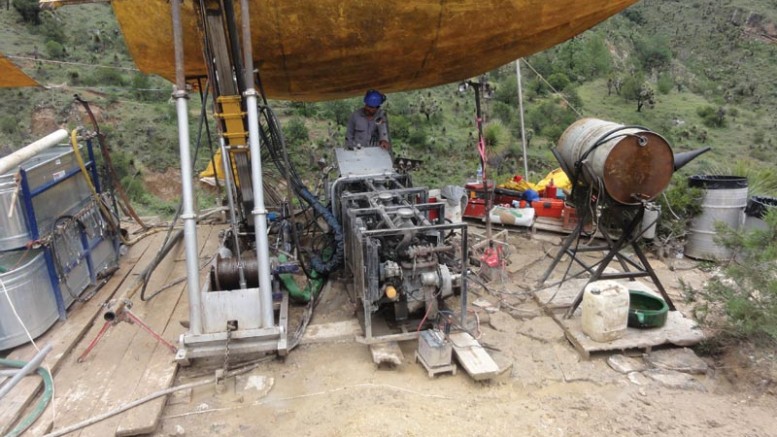Brent Cook, an independent exploration analyst and editor of Exploration Insights, delivered a talk in early March at the Prospectors & Developers Association of Canada convention on whether there is a remedy to the skepticism and mistrust many retail investors have towards the mining industry.
Cook isn’t sure there’s a simple solution. Factors that have tainted the industry’s reputation include stock touts, biased analyst coverage, management spin, and confusion about the purpose of the National Instrument (NI) 43-101 standard of disclosures for mineral projects.
Cook says some newsletters position relatively unheard of junior companies as favourable takeover targets, or companies with extreme mineral wealth. For example, in 2011 Stock Castle pumped up U.S.-based exploration firm Lone Star Gold (US-OTC: LSTG) as a sure takeover target for Goldcorp (TSX: G; NYSE: GG), which misled investors. Goldcorp stepped in to put an end to the rumours.

“The reality is that the outlandish
cons work.”
Brent Cook
Analyst & editor,
Exploration Insights
Mining analysts, particularly on the sell side, may also recommend stocks based on company predictions and the fact that their job is to sell, Cook argues.
In 2009, Allied Nevada Gold, now known as Hycroft Mining (TSX: ANV; US-OTC: ANVGQ), predicted cash costs for production at its Hycroft mine would be US$400 per oz. gold in 2015. Given the high demand for gold stocks then, many analysts had “buy” recommendations on the company. In early 2015, Allied Nevada filed for bankruptcy protection due to falling metal prices and an unmanageable debt load.
“This is a real dilemma. I don’t know how to solve it, but it is a dilemma,” Cook said.
He reckons the NI 43-101 standard is a problem for investors because it outlines what should be included in a technical report, but does not guarantee legitimacy. “Yet companies put these out — NI 43-101 compliant resource, or whatever — as if, ‘OK, we have been validated.’ But obviously that’s not the case.”
An example of this is Rubicon Minerals (TSX: RMX; US-OTC: RBYCF). In January 2015, the junior said its 38,000-metre infill drill program confirmed continuity and grade of the F2 deposit. Later that year, it cautioned the deposit was more “geologically complex” than it thought and suspended all its work to update the 2013 geological model and compliant resource estimate. Come 2016, the revised resource estimate erased 2.9 million oz. from the deposit, which now contains 413,000 oz. gold.
Another problem has been executives putting a positive spin on poor results, Cook argues. For instance, on Feb. 17, 2016, Iamgold’s (TSX: IMG; NYSE: IAG) president and CEO Steve Letwin said his company performed well in 2015, but in the same release Iamgold reported an annual US$797.1-million net loss, or US$2.04 per share, compared to a US$269.5-million loss in 2014. “I can’t reconcile these two statements,” Cook said. “This is the president of a major company, and this is what they are telling their shareholders — their retail shareholders.”
Other disconnects in the industry include higher executive compensation even as share prices have declined, Cook says, adding that general and administrative costs are “out of whack.”
Retained earnings for gold companies are below other resource industries, he continued, arguing companies are not adding value per share.

A conveyor at Hycroft Mining’s now shuttered namesake gold mine in Nevada. The miner filed for bankruptcy in 2015. Credit: Hycroft Mining
He points to a slide in Gold Resource’s (NYSE-MKT: GORO) recent presentation that compares the gold-ounce production that companies need to generate a cent in annual dividend. Newmont Mining (NYSE: NEM) has to produce 524,000 oz. gold a year before it can pay a cent in annual dividend, while Gold Resource claims it needs 42,000 oz. to give its shareholders a cent in annual dividend.
“What this shows is that over time gold companies have continually diluted their shareholders to raise money and issue equity. They can’t make money mining,” Cook lamented.
Also confounding retail investors is the way companies highlight costs, at times using low or negative cash costs, when their all-in sustaining costs are in fact rather high.
“The reality is that the outlandish cons work. The industry standards fail to protect investors. The accounting is archaic and confusing. Management’s spin is misleading. Shareholders’ interest is not really aligned with management or sell-side analysts. And demand is usually out of sync with supply,” Cook said.
Mining is an “extremely complex industry” and requires numerous fields of specialization — such as geology, resource estimation, mining, metallurgy, mining and finance — which leaves room for confusion, Cook claims.
He adds that there are not enough top-tier deposits left in the world that offer high margins to fulfill the needs of the estimated 1,500 exploration companies, 150 sell-side analysts and 40 or so research firms. The sector may find one or two top-tier projects a year, with first production taking another 10 to 20 years.
Meanwhile, Cook proposes that possible remedies to rebuild investor confidence include full disclosure from companies and better investor education. He says there are already enough regulations in the industry, and suggests companies could benefit from better transparency by providing more context, diagrams and maps in their NI 43-101 reports, resource estimates and company websites for investors.
In his view, two examples of good disclosures are recent news releases by Mirasol Resources (TSXV: MRZ; US-OTC: MRZLF) on its earn-in agreement with a subsidiary of AngloGold Ashanti (NYSE: AU), and by Almaden Minerals (TSX: AMM; NYSE-MKT: AAU) on its recent drill results from its Ixtaca zone. Cook says that both provide investors enough details to make an informed decision.





Be the first to comment on "PDAC 2016: Transparency, education needed to restore confidence in miners, Brent Cook says"